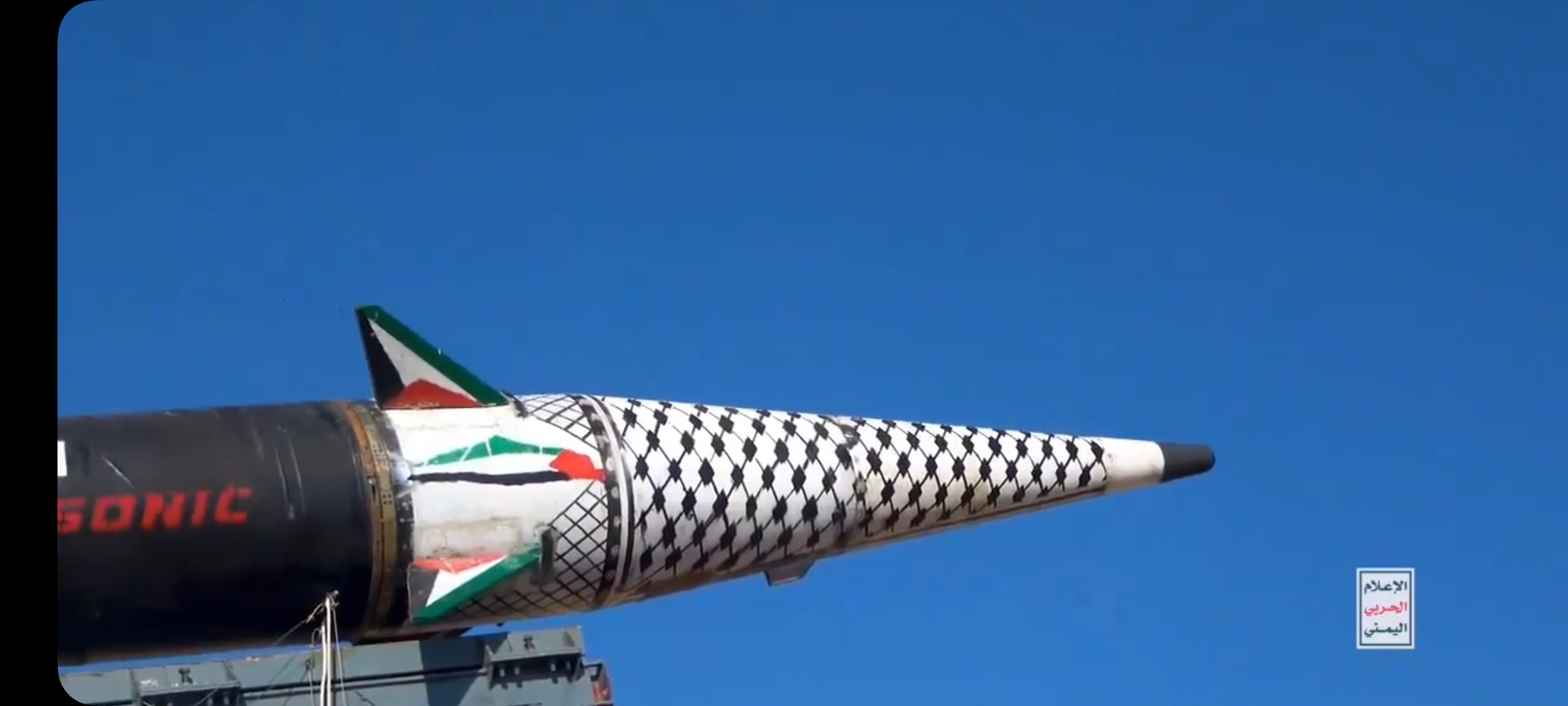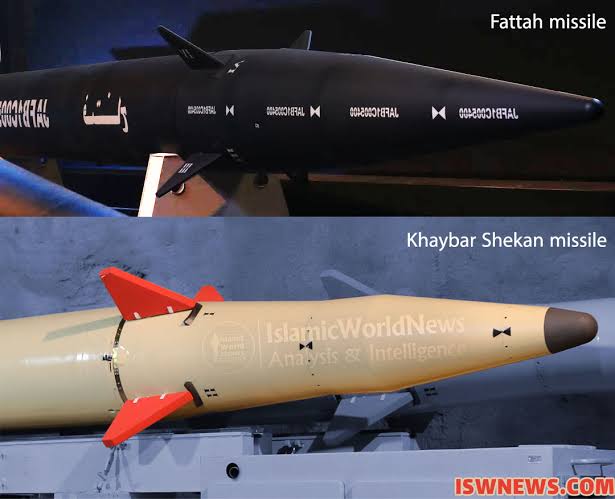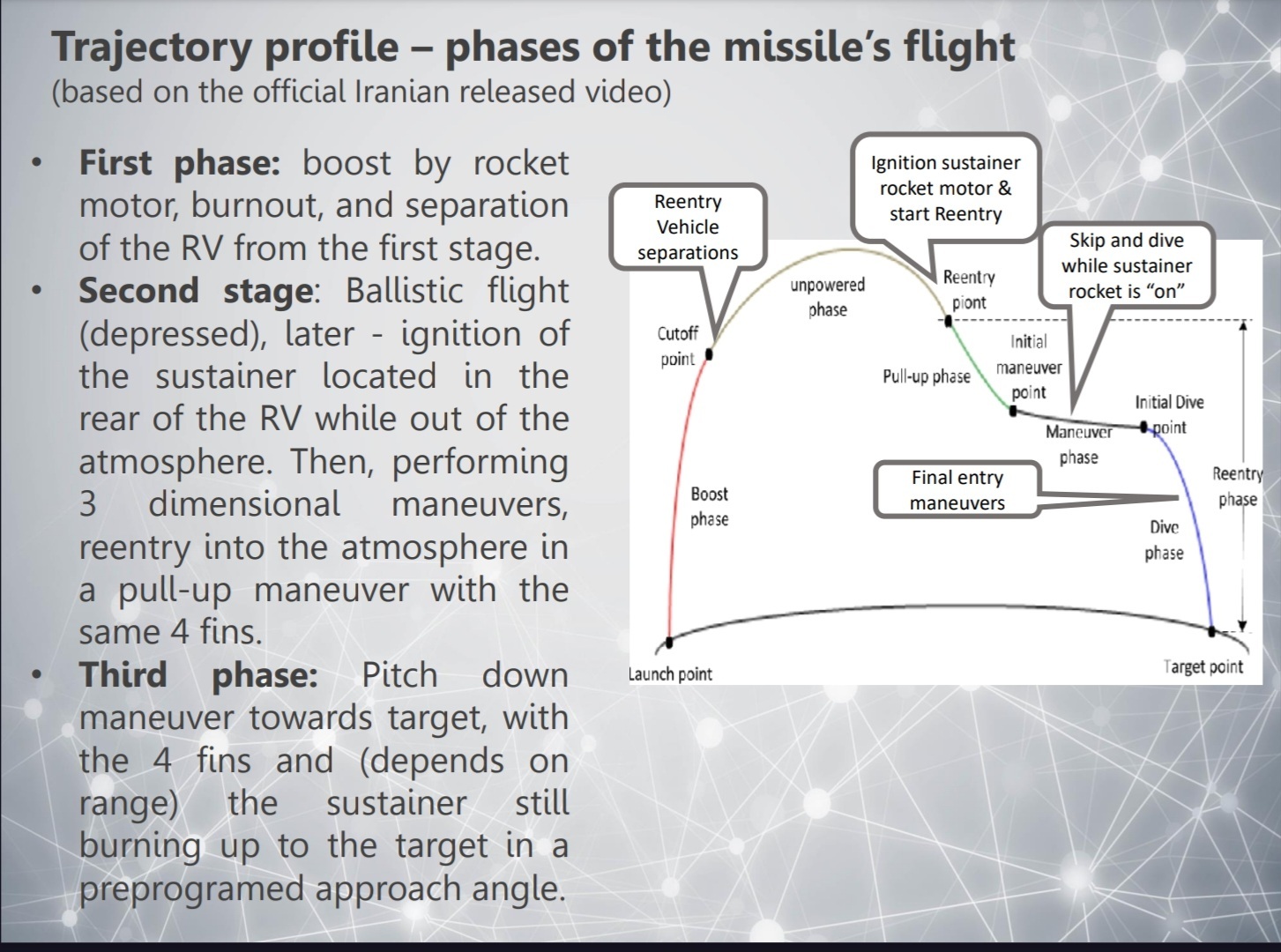Speculation on Yemeni and Iranian ballistic missile technology with regards to the new Palestine-2 missile, used in yesterday's strike on Israel
After looking at the footage released of the missile used by Ansar Allah/The Houthis to strike Israel yesterday, I have come to an unlikely conclusion: They and Iran have collaborated to create an extended range version of the two stage Iranian Fattah-1 hypersonic ballistic missile and re-entry vehicle, in combination with parts from the Iranian Kheibar Shekan ballistic missile and re-entry vehicle. A far fetched conclusion that I didn’t believe at first given how new the Fattah-1 missile is and given statements from Iran, but one I view to be the most likely based on the size and shape of the missile, and statements from both sides.
with a range of up to 2,150 km, operates on two-stage solid fuel, incorporates stealth technology, and can reach speeds of up to Mach 16. This makes it capable of evading the most advanced air defense systems, including the Iron Dome.
The missile has a high maneuverability, enhancing its effectiveness in penetrating enemy air defenses.
This rules out all liquid fueled rockets. It also mandates a two stage design, along with a maneuverable warhead and depressed trajectory for stealth. The only place for a seperate stage, given that there are no visible separations or jettison points in the booster stage itself, is the warhead itself.
Experts in Western Media have claimed that the Palestine-2 is a variant of the Kheibar Shekan missile, a statement which is half right. The initial booster stage, along with the rear and front fins are likely from the Kheibar Shekan series of missiles.
However, the warhead of the Kheibar Shekan is different from the one pictured on the Palestine-2, in function. The Kheibar Shekan warhead/re entry vehicle does not have its own rocket stage, so it is not a two stage rocket system. Once it is jettisoned from the booster rocket, it can manoeuvre on its own to avoid interception, but it has no power of its own, meaning it only impacts the target at a speed of Mach 2-3. In appearance, only the fins are the same. By contrast, the Fattah-1 warhead contains its own rocket stage, something that would be required for the Palestine-2 to be a two staged rocket system. From a visual standpoint
Palestine-2 warhead:
Comparison between Fattah-1 and Kheibar Shekan:
Fattah-1 second stage motor:
As for the range, Iran has reported in the past that they would be able to extend the range of the Fattah-1 to 2000km. Could the Palestine-2 be the end result of such efforts? I’d guess so.
As for how the Fattah-1 works, I came across this white paper PDF by the "Missile Defence Advocacy alliance that explains how it functions. In short, is the Fattah-1 a true hypersonic weapon? My answer is that it is as close as you can yet using ballistic missile technology and without using a lift generating re-entry vehicle/hypersonic glide vehicle, which the successor Fattah-2 aims to do. Ultimately agility while in the terminal phase is limited by the four fins and limited thrust vectoring on the second stage, in short it can probably dodge a bit, but it can’t do a full turn. Most of the maneuvering probably takes place before the final dive to the target. However, the additional rocket stage on the re-entry vehicle/warhead allows for manoeuvres and a trajectory that would not otherwise be possible with a ballistic missile, explained here.
This could explain the stealth capabilities of the missile, and why Israel detected it so late. The depressed trajectory, as well as relatively low altitude during the “pull up phase”, means that ground radars cannot detect the initial launch and would lose track of the warhead during the pull up phase due to the earth’s curvature. However, there will be a large heat signature due to the second rocket stage.
Speculation on Yemeni and Iranian ballistic missile technology with regards to the new Palestine-2 missile, used in yesterday's strike on Israel
After looking at the footage released of the missile used by Ansar Allah/The Houthis to strike Israel yesterday, I have come to an unlikely conclusion: They and Iran have collaborated to create an extended range version of the two stage Iranian Fattah-1 hypersonic ballistic missile and re-entry vehicle, in combination with parts from the Iranian Kheibar Shekan ballistic missile and re-entry vehicle. A far fetched conclusion that I didn’t believe at first given how new the Fattah-1 missile is and given statements from Iran, but one I view to be the most likely based on the size and shape of the missile, and statements from both sides.
According to Yemeni State Media, the Palestine-2 missile:
This rules out all liquid fueled rockets. It also mandates a two stage design, along with a maneuverable warhead and depressed trajectory for stealth. The only place for a seperate stage, given that there are no visible separations or jettison points in the booster stage itself, is the warhead itself.
Experts in Western Media have claimed that the Palestine-2 is a variant of the Kheibar Shekan missile, a statement which is half right. The initial booster stage, along with the rear and front fins are likely from the Kheibar Shekan series of missiles.
However, the warhead of the Kheibar Shekan is different from the one pictured on the Palestine-2, in function. The Kheibar Shekan warhead/re entry vehicle does not have its own rocket stage, so it is not a two stage rocket system. Once it is jettisoned from the booster rocket, it can manoeuvre on its own to avoid interception, but it has no power of its own, meaning it only impacts the target at a speed of Mach 2-3. In appearance, only the fins are the same. By contrast, the Fattah-1 warhead contains its own rocket stage, something that would be required for the Palestine-2 to be a two staged rocket system. From a visual standpoint
Palestine-2 warhead:
Comparison between Fattah-1 and Kheibar Shekan:
Fattah-1 second stage motor:
As for the range, Iran has reported in the past that they would be able to extend the range of the Fattah-1 to 2000km. Could the Palestine-2 be the end result of such efforts? I’d guess so.
As for how the Fattah-1 works, I came across this white paper PDF by the "Missile Defence Advocacy alliance that explains how it functions. In short, is the Fattah-1 a true hypersonic weapon? My answer is that it is as close as you can yet using ballistic missile technology and without using a lift generating re-entry vehicle/hypersonic glide vehicle, which the successor Fattah-2 aims to do. Ultimately agility while in the terminal phase is limited by the four fins and limited thrust vectoring on the second stage, in short it can probably dodge a bit, but it can’t do a full turn. Most of the maneuvering probably takes place before the final dive to the target. However, the additional rocket stage on the re-entry vehicle/warhead allows for manoeuvres and a trajectory that would not otherwise be possible with a ballistic missile, explained here.
This could explain the stealth capabilities of the missile, and why Israel detected it so late. The depressed trajectory, as well as relatively low altitude during the “pull up phase”, means that ground radars cannot detect the initial launch and would lose track of the warhead during the pull up phase due to the earth’s curvature. However, there will be a large heat signature due to the second rocket stage.